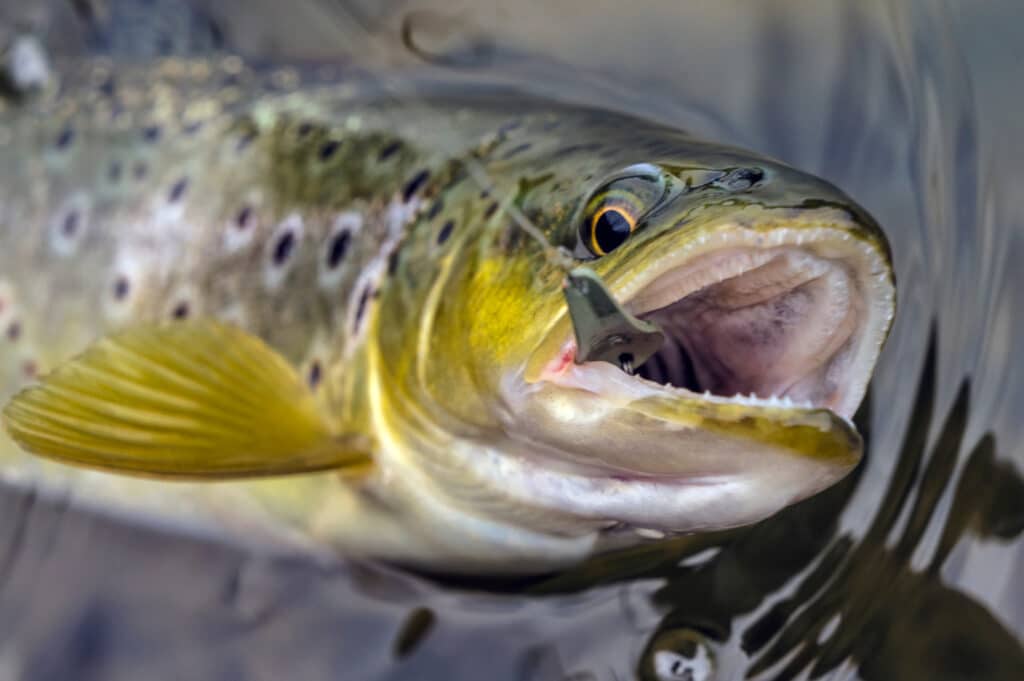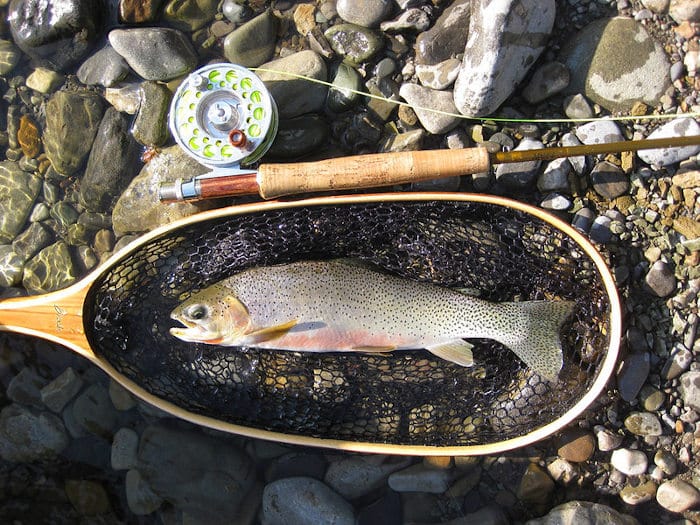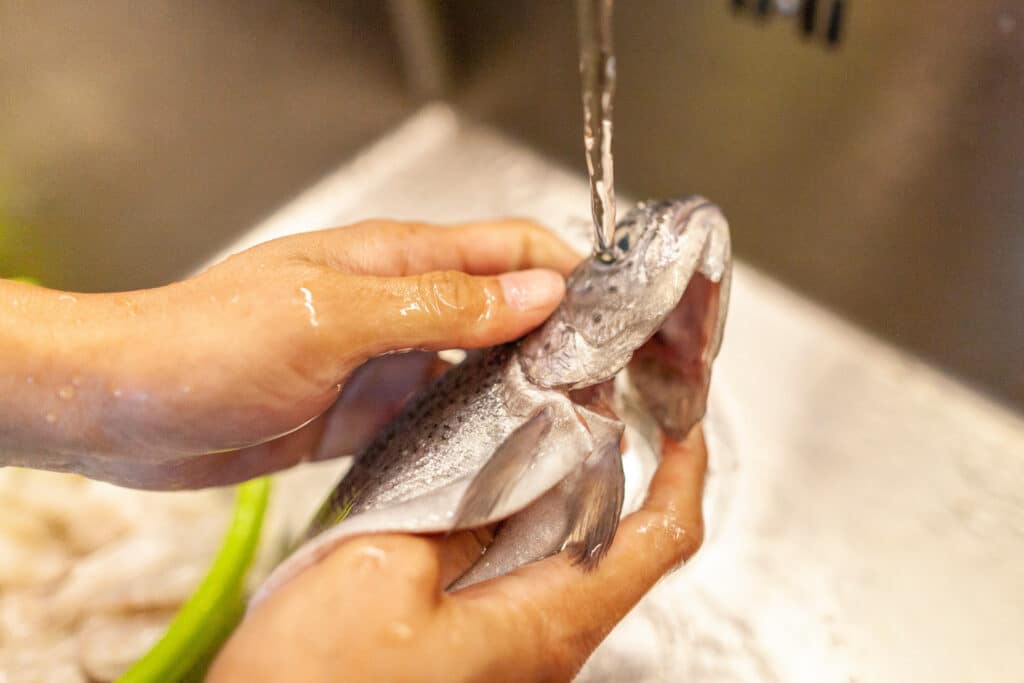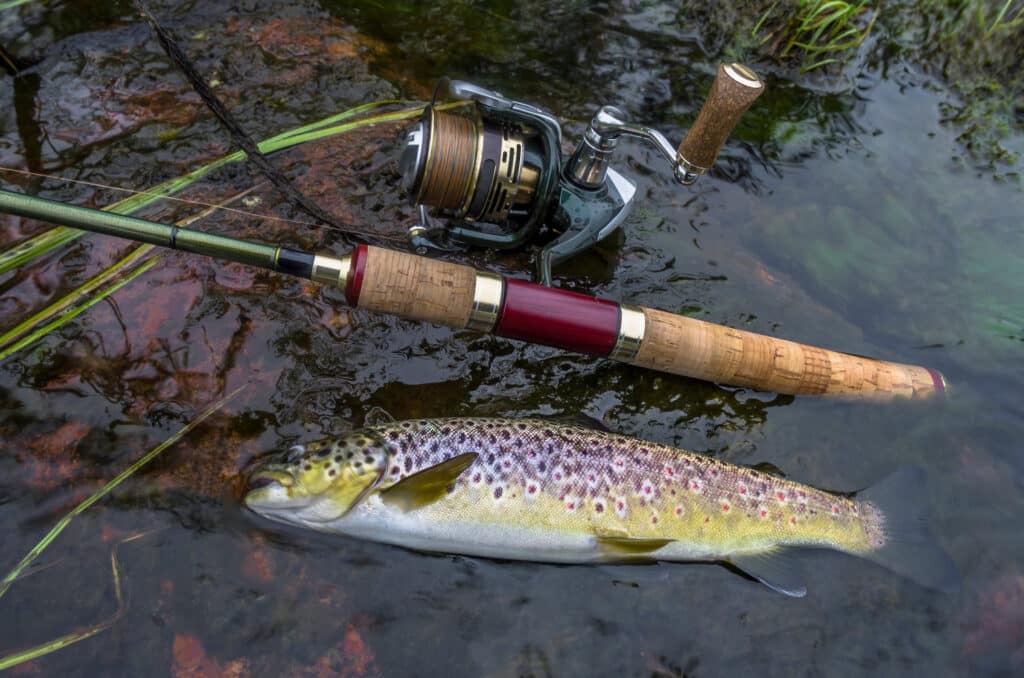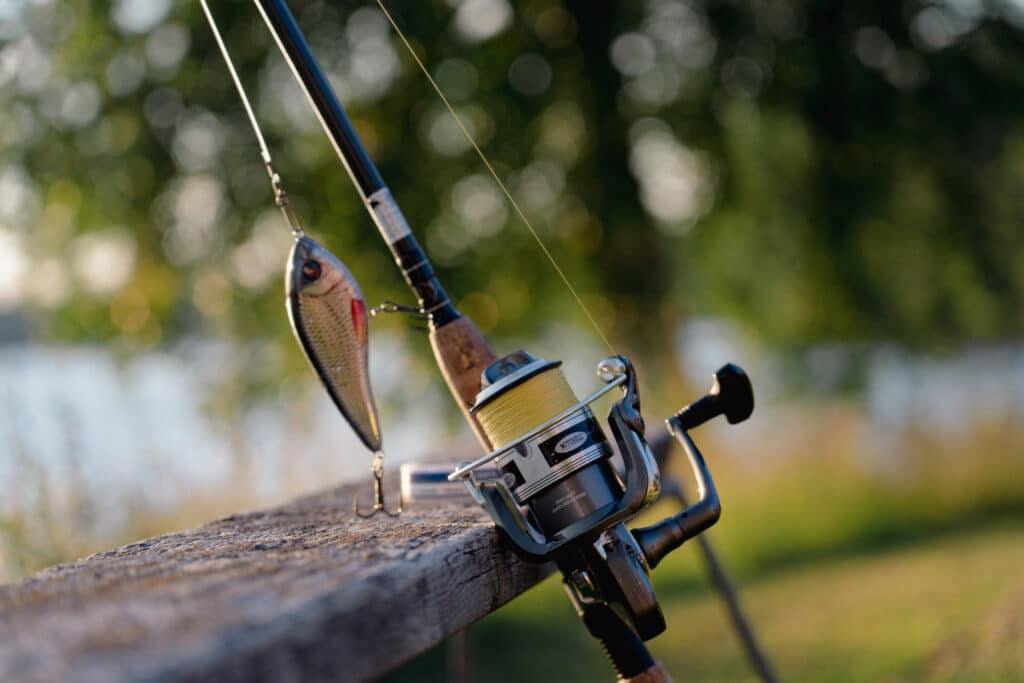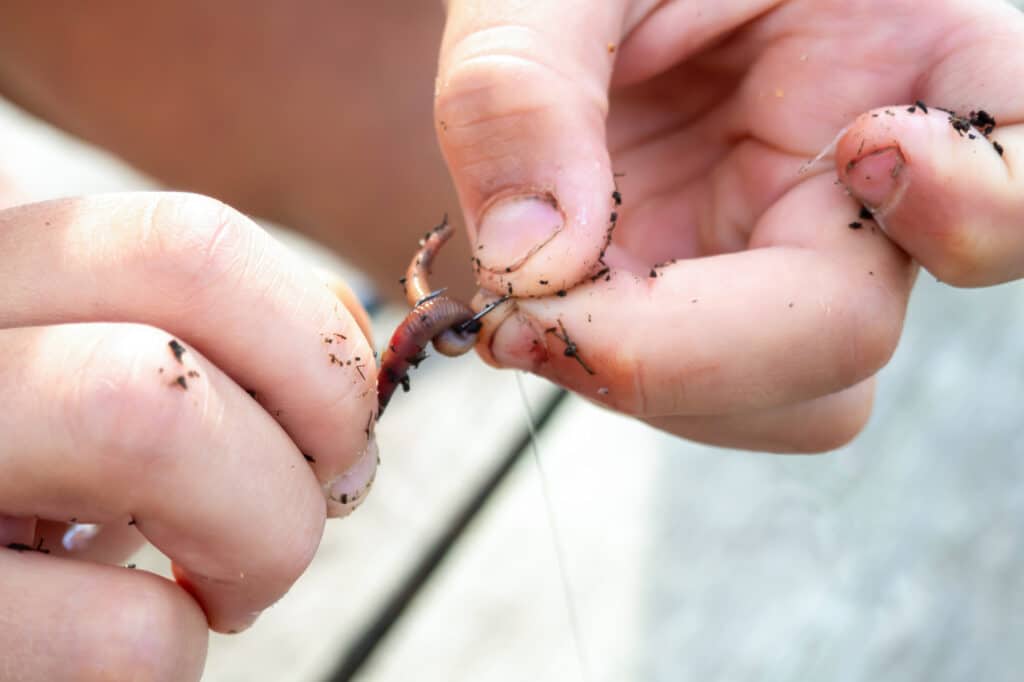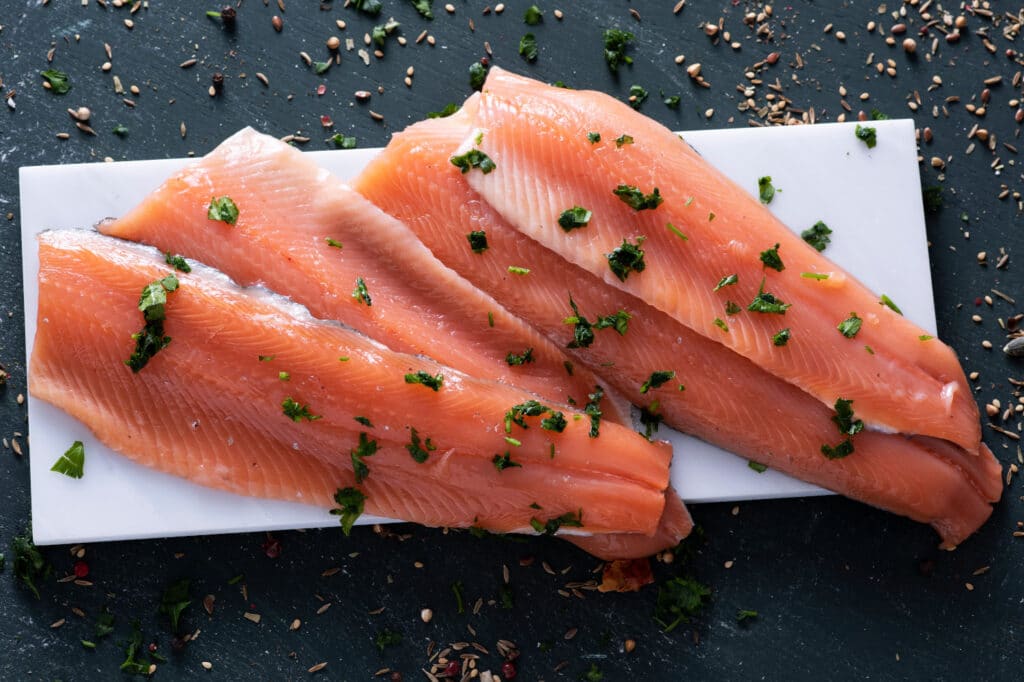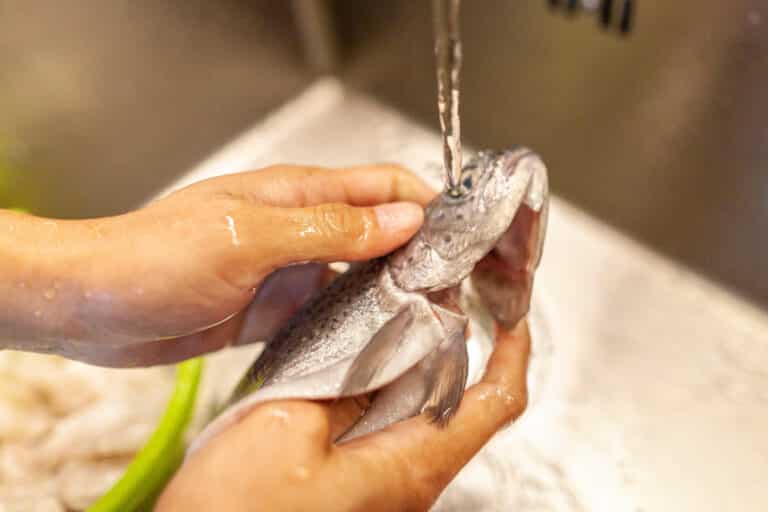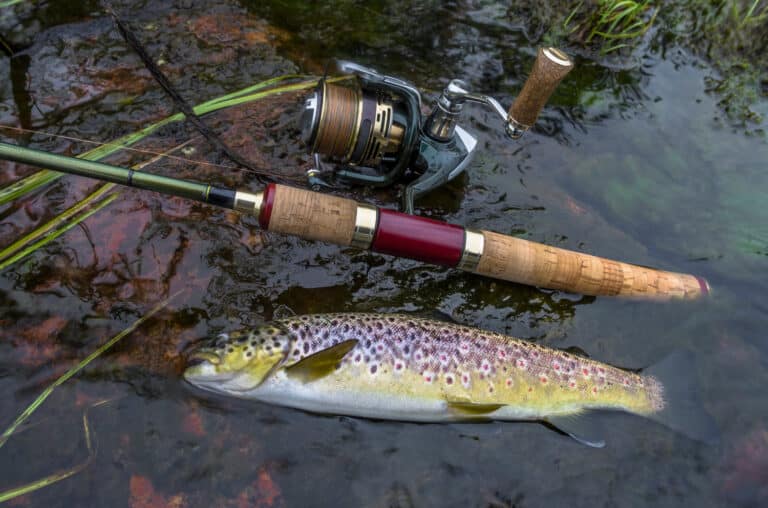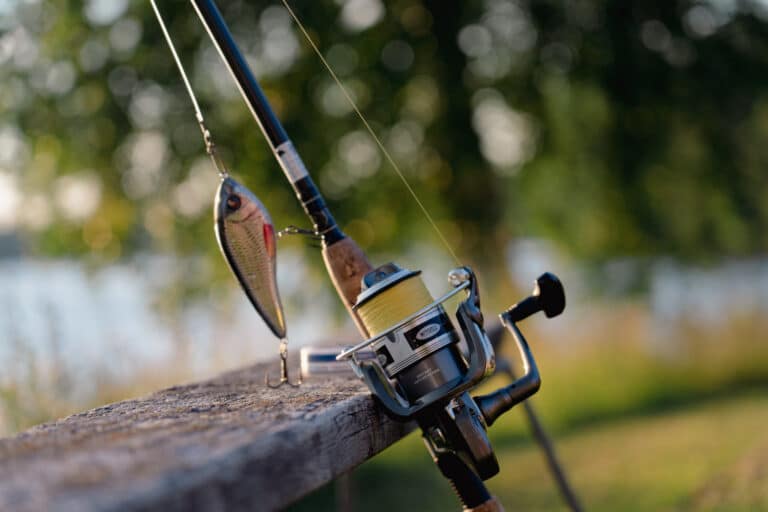There are a million different ways to catch trout. Bobbers and bait, spinners, crankbaits, and flies are all effective. But if I had to pick one way to fish for trout forever, it would be with spoons.
That’s because not only are spoons incredibly versatile, but they’re also one of the most fun and active ways to fish. You can troll them deep for lake trout, cast and retrieve them in lakes or big rivers, or flutter them through small streams. Spoon fishing can feel like an art, but it’s much more beginner-friendly than fly fishing.
There are about as many different spoons as there are anglers, but the best of the best spoons have stood the test of time. In this article, I’m going to go over the only 7 spoons you’ll ever need to catch trout. They each have their own subtly different advantages, and if you carry a few of them with you then you’ll always have a trout-slaying lure in your tackle box.
The Wild Provides is a participant in the Amazon Affiliate program. If you click through one of the links on this site and make a purchase, we may receive a small commission at no extra cost to you. It helps to keep us up and running, but all recommendations are my own honest opinions.
What Are Trout Spoons?
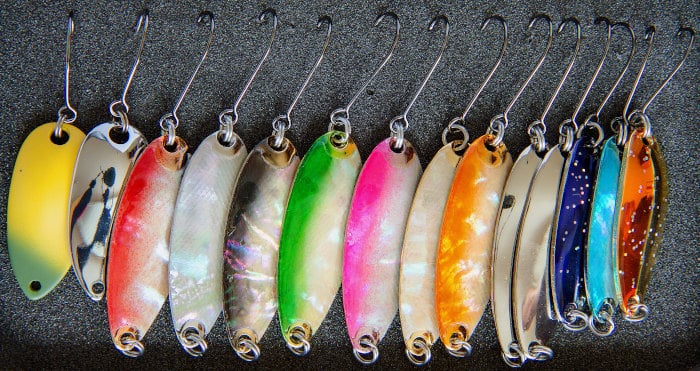
When it comes to trout fishing, simple is usually best, and spoons are about as simple as they come. Essentially, a spoon is just a single piece of oblong-shaped shiny metal with a concave surface (hence the name “spoon”). Actions vary, but they’re generally designed to wobble and flutter around when they’re retrieved, reflecting light at all angles as they go.
Their wobbling and flashy action is supposed to imitate small baitfish that aggressive, adult trout feed on. But even trout that feed primarily on insects will hit spoons, too, because that irresistible wobble triggers their instinct to strike.
This article is about spoons, so of course, I’m sticking to spoons. But if you want the lowdown on the best trout lures (including spinners, jigs, and crankbaits), check out my article on it.
And if you’re totally new to trout fishing and want a rundown on how to do it, check out my post on trout fishing 101.
How To Fish With Trout Spoons
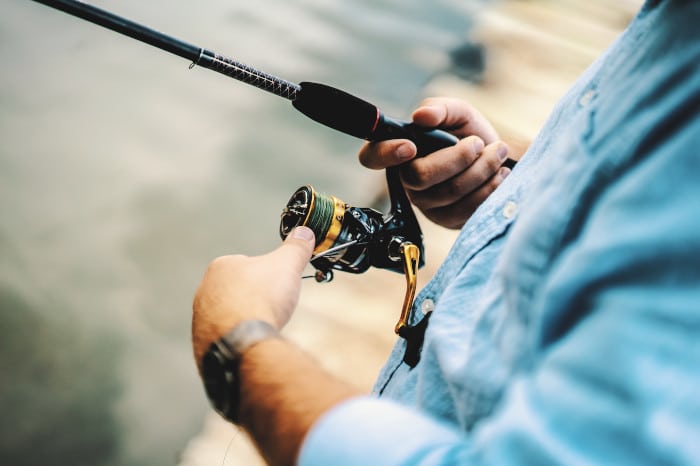
You can skip this section if you’d like, but I want to give some background before I get into my rankings. The genius of a trout spoon is that it can be fished in more ways than you can count, and each spoon has advantages that work better for different situations.
Trout spoons are great for their versatility. You can crank them in, slow retrieve for a heavy wobble effect, or jig and drop to let them flutter on the fall. But you need to know what to try and when, so here are some basic rules.
Best Line For Spoon Fishing Trout
Spoons are for aggressive trout, so you don’t have to worry as much about using light line. Still, I like to use 4-6 pound test monofilament line for easier casting. If I know the water has potential for lunker brown trout or 20-inch rainbows, I’ll size that line up to 8 or even 10-pound test. When I fish for steelhead, I’ll use anywhere from 12-20 pound test line (usually depending on water clarity).
I also like to use fluorocarbon leaders (when I can afford it; check out my post on the best fluorocarbon line for any budget). Fluorocarbon sinks, helping spoons get down quicker in fast water. Fluorocarbon is best paired with 10-pound test braid, which is very thin and cuts through current easier than mono.
I wrote an entire post on the best fishing line for trout, broken down by species and situation, so check that out if you need more detailed info.
How To Retrieve Spoons
Every spoon lends itself to different kinds of retrieves, which I get into in my rankings below. But a typical spoon retrieve is steady, and just a little slower than you would need to fish an average spinner.
Certain spoons, like the Kastmaster, also work really well when retrieved erratically. Spoons like these have a lot of action when falling through the water column, so letting them stop and drop every now and then can be the key to getting strikes.
Then there are what I like to call “flutter spoons” like the Little Cleo. These spoons work great when cast upstream and reeled very slowly through a run or tailout. The current will do most of the work, and they’ll flutter and roll as they move downstream. Reel in just fast enough to keep them off the bottom, and let them swing across the current when they get downstream of you.
Finally there are spoons that work great for trolling, like the Krocodile. These can be cast and retrieved, too, but they’re also great for trolling deep for lake trout or big lakes rainbow trout.
Overall, the best way to retrieve a spoon is the way that’s working that day. Being adaptable is key. Mix up slow, fast, and jigging retrieves until you figure out what’s working.
The Best Spoons For Trout Fishing: Ranked
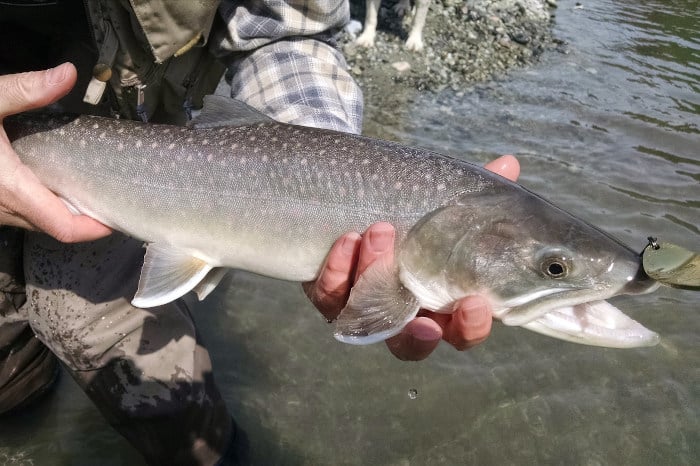
Honestly, ranking trout spoons is hard. There are standouts, and every spoon on this list has stood the test of time. But the reality is that any of them might be best for any given river, day, or trout species. They’re all proven to catch trout and they all deserve a place in your tackle box.
With that said, here are the best trout spoons, ranked by popularity, reliability, and of course, my own personal opinion.
#1. Acme Kastmaster

As many trout anglers will tell you, if you only buy one spoon, make it a Kastmaster.
That’s because of all the spoons on the market, the Kastmaster is the most versatile. Its unique flat shape allows it to be fished in any way imaginable. You can troll at high speeds without sacrificing action, you can cast it a country mile, and you can even jig it vertically for incredible results. It’s so versatile that I even wrote a whole post about it, so check that out for more details (LINK).
Kastmaster comes in a ridiculous amount of colors, but like any good trout spoon, the best colors are gold and silver. Anywhere from 1/12 oz to 1/4 oz work great for trout fishing, but 1/8 oz seems to be the sweet spot for rivers and lakes, and I like 1/12 oz in shallow creeks.
#2. Acme Little Cleo

Being from the northwest, I really wanted to make the Acme Little Cleo lure my number one. It’s a steelhead killer (steelhead are just ocean-going rainbow trout), and the coastal guides and locals swear by it. The Kastmaster is a tiny bit more versatile, but if you were only going to buy two spoons, the Little Cleo and the Kastmaster complement each other perfectly.
While the Kastmaster has a quick, aggressive action that triggers a quick bite, the Little Cleo is a bit more on the finesse side. Letting river current do most of the work is key, and the way that current deflects off of a slowly sinking Cleo can be absolute magic.
Cleo’s excel when swinging through tailouts and slower water. Their perfect flutter as the current slows down is a trout magnet, perfectly imitating a wounded baitfish that got swept through the faster current above. The best way to fish them is to cast slightly upstream and keep the line tight, reeling very slowly to keep them moving downstream and fluttering the whole way through.
When it comes to Little Cleos, blue and silver in 1/6oz or 1/4oz is my go-to color. But solid silver, solid gold, and silver and red have all been solid trout catchers for me and the folks I fish with.
#3. Luhr Jensen Krocodile

The Luhr Jensen Krocidile comes in at number three because it’s one of the best trout lures for trolling. Its elongated design and spin create a more aggressive flash than most other spoons, and it’s killer when the trout are super aggressive. At 2 1/4 inches for the smallest option, it’s the longest lure on this list.
It might not be the best trout spoon for finicky fish, but when the bite is hot, the Krocodile can bring in more fish from longer distances. It’s a great option for speedy trolling in lakes, too, because their weight and elongated body keep them deeper down in the strike zone. I also like it for bank casting during the fall when big trout start to feed more aggressively.
I like these lures in silver and gold, but with the hammered finish. I think the dimples provide even more flash than the smooth versions, and that’s exactly what I use them for. Size totally depends on what I’m fishing for. When trolling for big lake rainbows I’ll use the 3 1/4 inch, 1 oz size, but I’ll size down when casting from the bank for smaller trout.
#4. Thomas Buoyant

The Thomas Bouyant comes in at #4 on my list because it does something that few spoons do: it works exceptionally well at slow speeds. That’s why it’s one of my go-to’s for high mountain streams or shallow creeks. It can be fished effectively at slower speeds than any other spoon on this list, but it still provides a ton of flash and wobble.
With the Buoyant, don’t even tie it on if you want to crank it in. It spins more than it wobbles, and it’ll quickly twist your line up if you’re not careful. Just flutter it and retrieve it slowly, which is great for inducing a strike from wary lurkers.
Copper is my go-to color, but the Rasta-esque “firetiger” can sometimes be the ticket to catching finicky biters. Since it’s a great small stream lure for me, I usually stick to the 1/6 oz option.
#5. Acme Phoebe

When I was first given a few Acme Phoebes, my first impression was “gimmicky”. The fact that it’s cut out into the shape of an actual baitfish seemed weird, given that spoons are really just for flash. But after fishing with them, I realized that something about those offset fin cuts gives the Acme Phoebe a unique action. Make no mistake: the Phoebe catches trout with the best of them.
Like the Thomas Buoyant spoon, it spins rather than wobbles, and it doesn’t sink as fast as most spoons. It works really well for fishing at slow speeds, which makes it a great option for small streams and shallow creeks. Silver and gold in 1/12 oz or 1/8 oz are standbys, but the rainbow trout color has also been great for me.
#6. Eppinger Dardevle

Though there are spoons that I like a little better these days, the Dardevle is still the classic of classics. It was originally released in 1918, and has probably caught more trout in its history than any other trout lure. When my grandpa gave me his old fishing tackle it was chock full of Dardevles, and he swore that those were his go-to trout catchers.
The classic Dardevle spoon color is red and white stripes. Probably because of nostalgia more than anything, that color is what I usually fish with. But trout love silver and gold, too, and there are plenty of color variations to try out. I like this heavy spoon best with a fast retrieve, which is killer for everything from lake trout to big river rainbows to northern pike.
Because it works best on big, aggressive fish, I usually fish for trout with Dardevle’s in the 1/4-1/2 oz size.
#7. Blue Fox Pixee

As a Northwest native, I have to give the Pixee a place on this list. My dad grew up fishing with them for king salmon in Alaska, and they have a special place in every salmon angler’s heart. But trout and salmon are in the same family, and Pixee’s catch tons of trout, too.
Pixees are big and heavy (the smallest option is 1/4oz), so they work best for long casts in deep water. Because I mostly fish smaller creeks, I don’t use them that often. But when the water is fast and deep, there are few better spoons than a Pixee.
My favorite colors are silver with fluorescent red or orange. They make a variety, so any classic trout color should work well.
#8. Everything Else
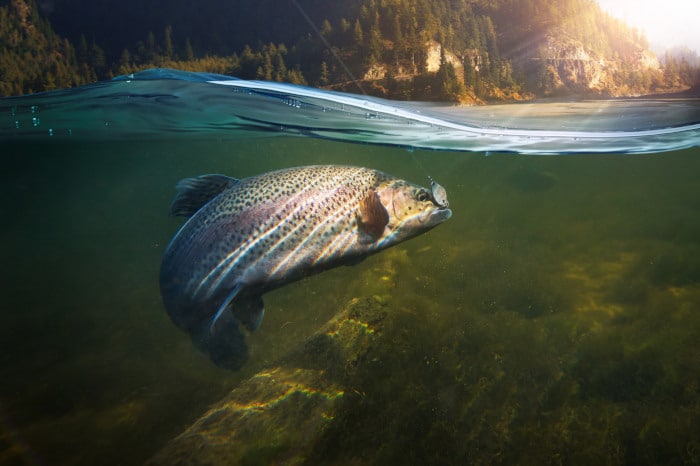
Spoons are pretty simple, so in all honesty, even Wal-Mart brand spoons will catch trout. But the lures on this list have earned their spots. They’ve been proven fish-catchers for decades, they last forever, and they’re made with quality hooks and materials. They also do something a little different than the rest, and most off-brand spoons are designed to imitate one of these classic 7.
If you do want to try out some cheaper brands, definitely go for it. But check out the hooks for sharpness, try to avoid painted ones (cheap paint is a common way to cut corners), and if it looks like one of the lures on this list, that’s probably a good sign.
FAQ
What Color Spoon Is Best For Trout Fishing?
Trout will bite a wide variety of colors, but silver or gold are always the best places to start. If the water is murky or it’s an overcast day, you might have better luck with a dark blue or green. And trout love pink and orange, so variations of those colors can work great too.
What size spoons are best for trout?
The size of spoon you should choose depends on where you’re fishing and the size of the trout, but 1/8 oz is a great sweet spot size. It’s big enough to attract big lunkers, but not so big that it’ll scare away medium and small-sized fish. For big lake trout anywhere from 1/2 oz to 1 oz might work better, and for little brook trout 1/12 oz works really well.
Do spoons work for ice fishing?
Absolutely. Trout are cold-water fish, so they stay aggressive enough to hit spoons all year long. I like small Kastmasters for jigging, but Swedish Pimples are a classic trout ice lure.
Final Thoughts
Spoons are trout fishing at its finest. They have survival kit-level reliability, are easy to use, and have enough versatility to fish any water you can find. If you keep a few of these spoons in your tackle box, you’ll never be without a secret weapon for catching trout.

